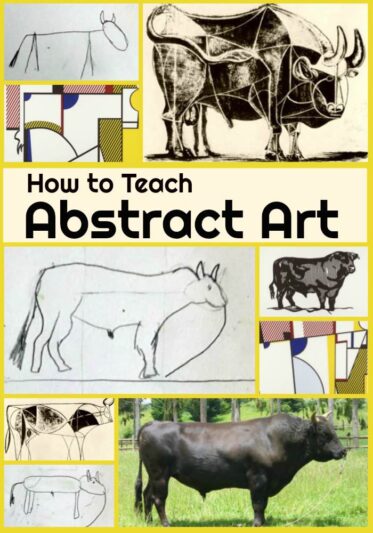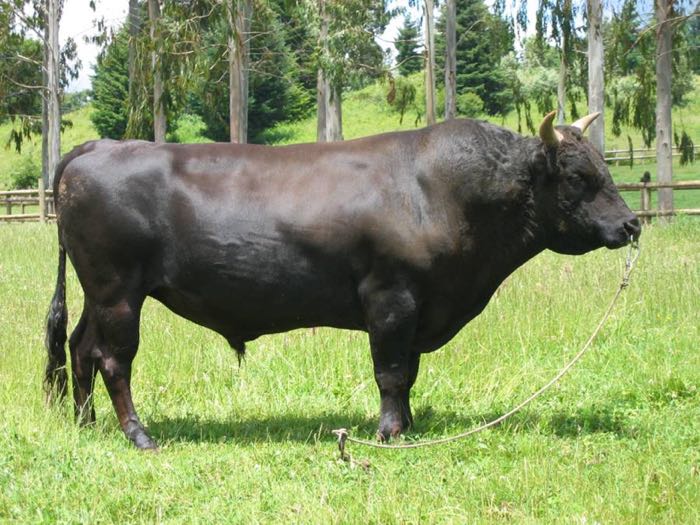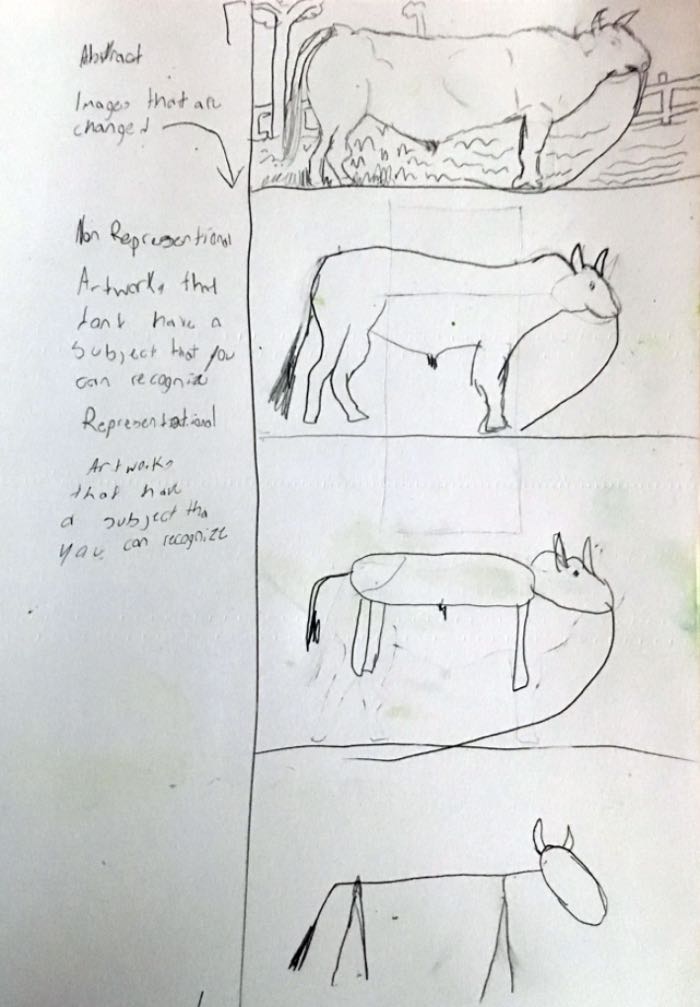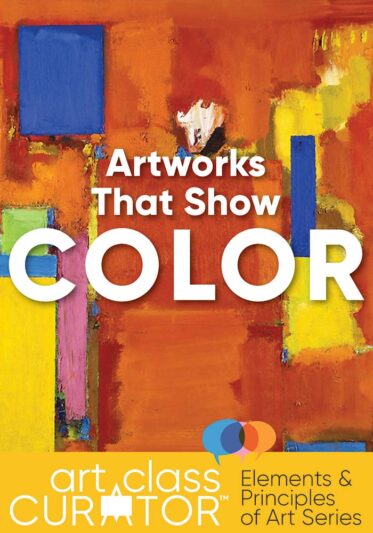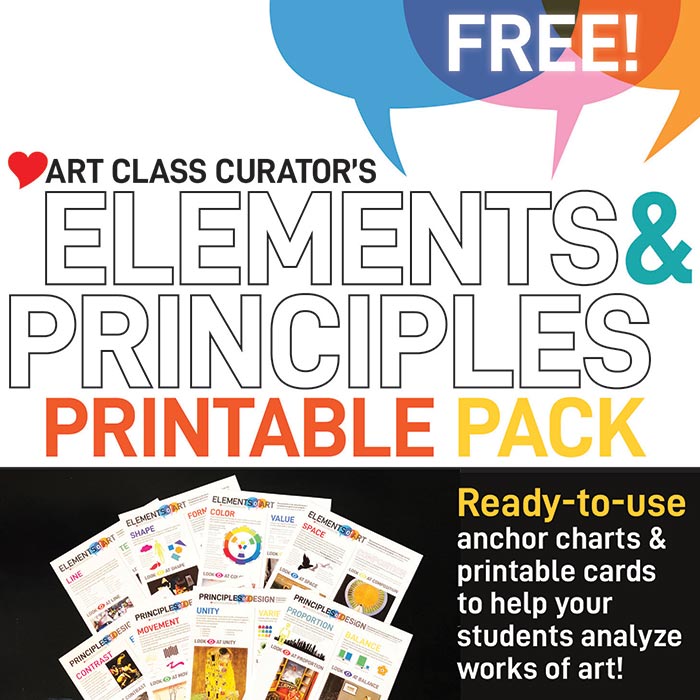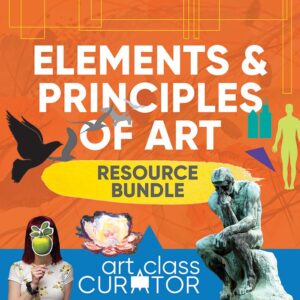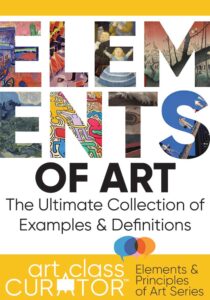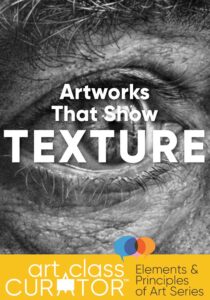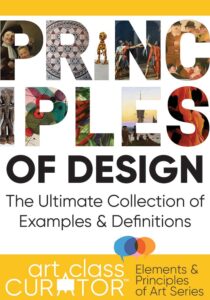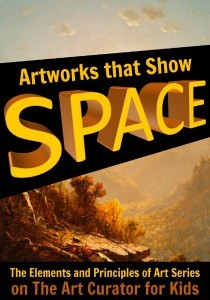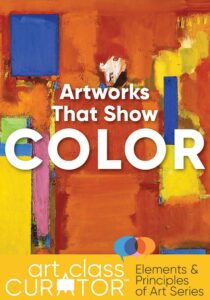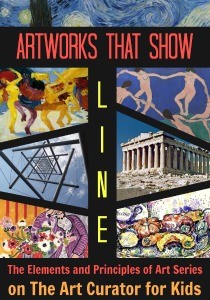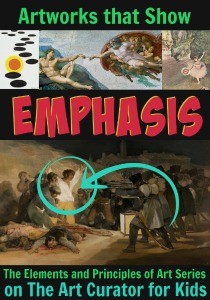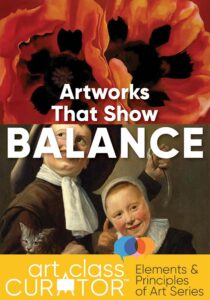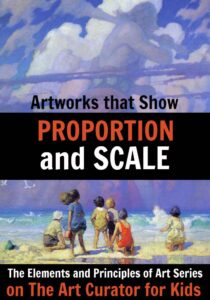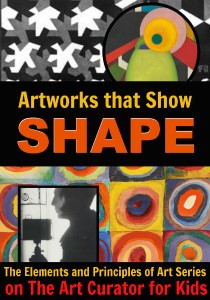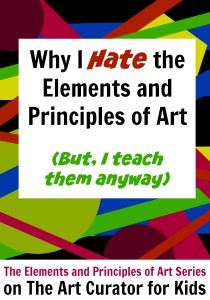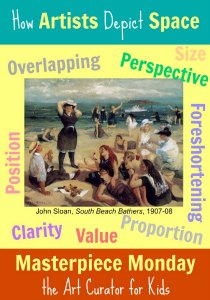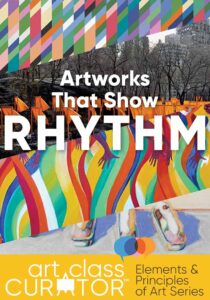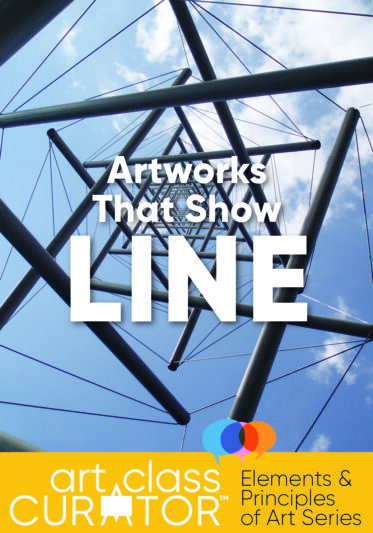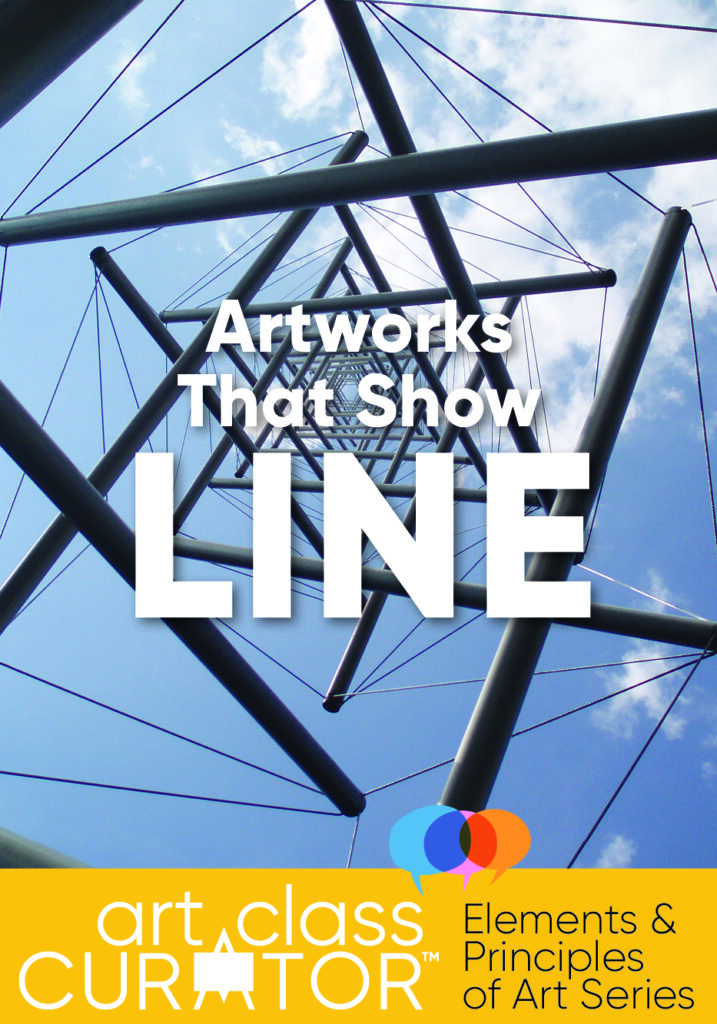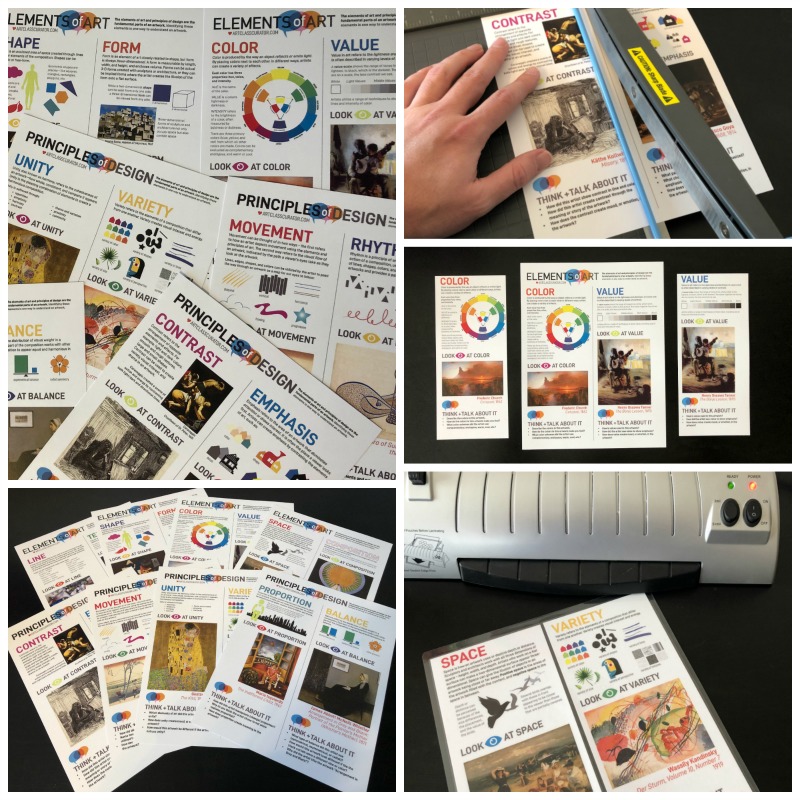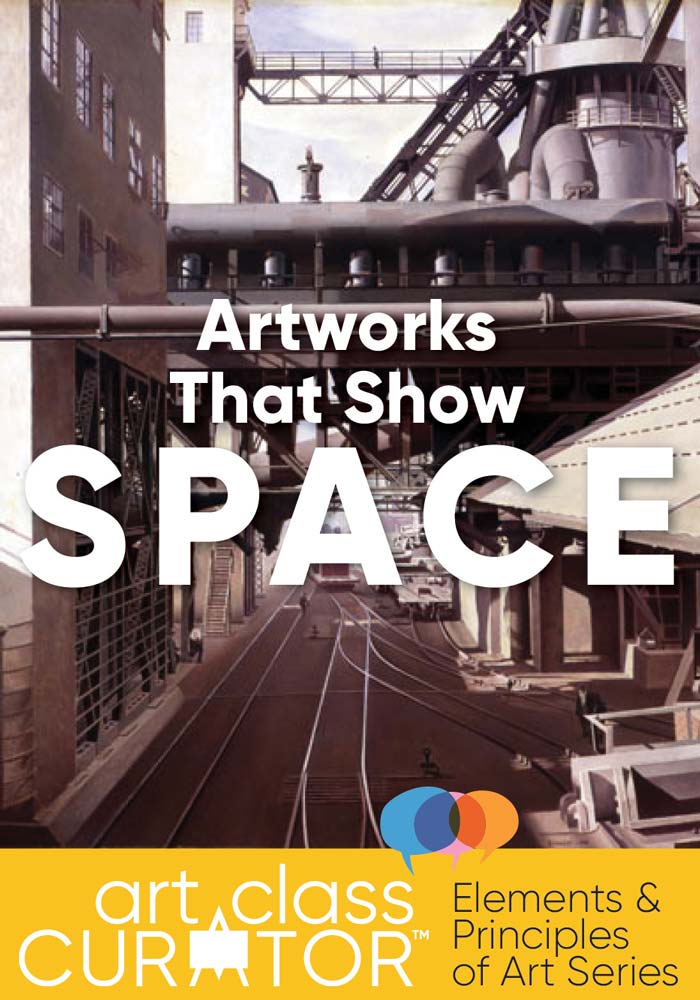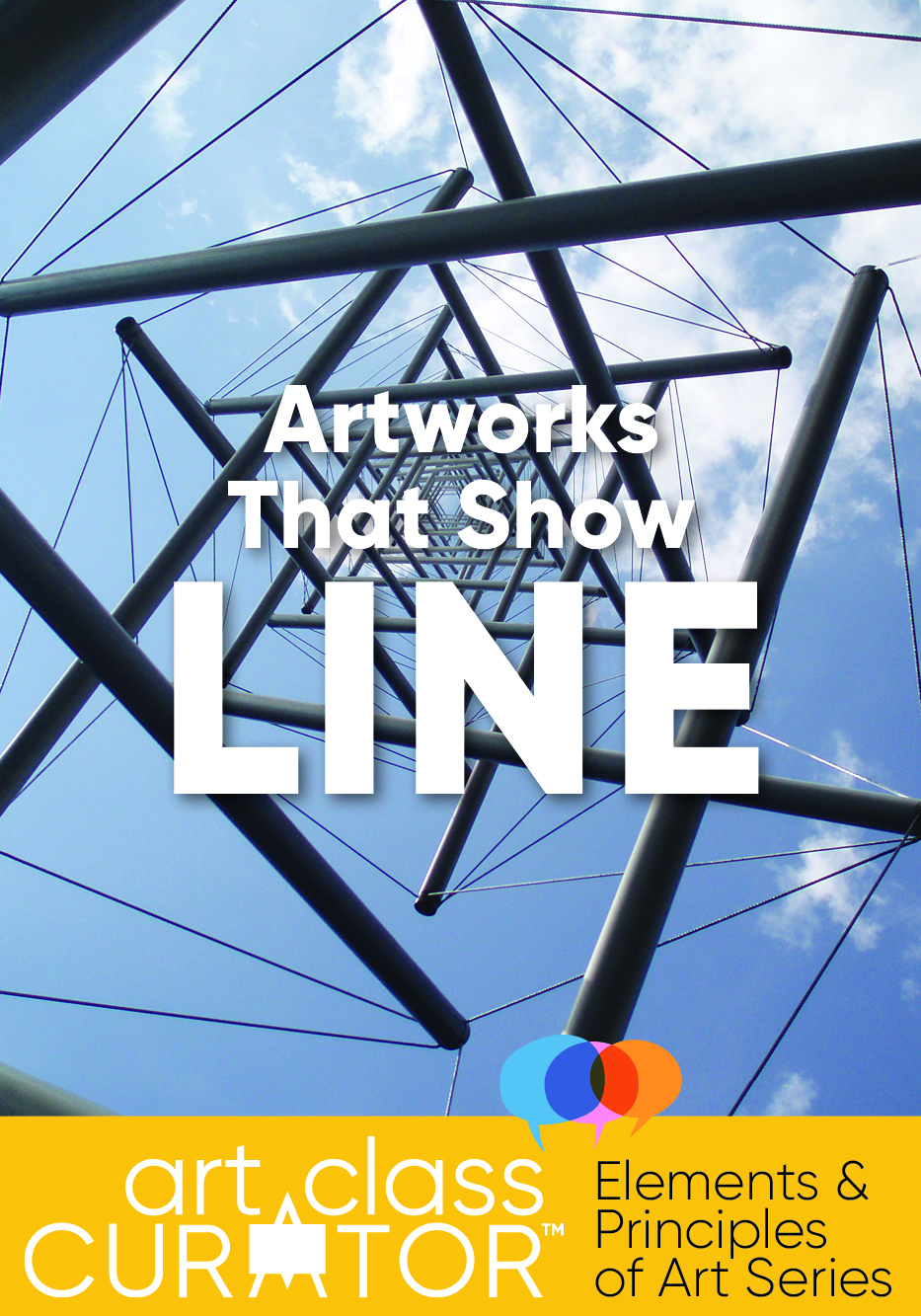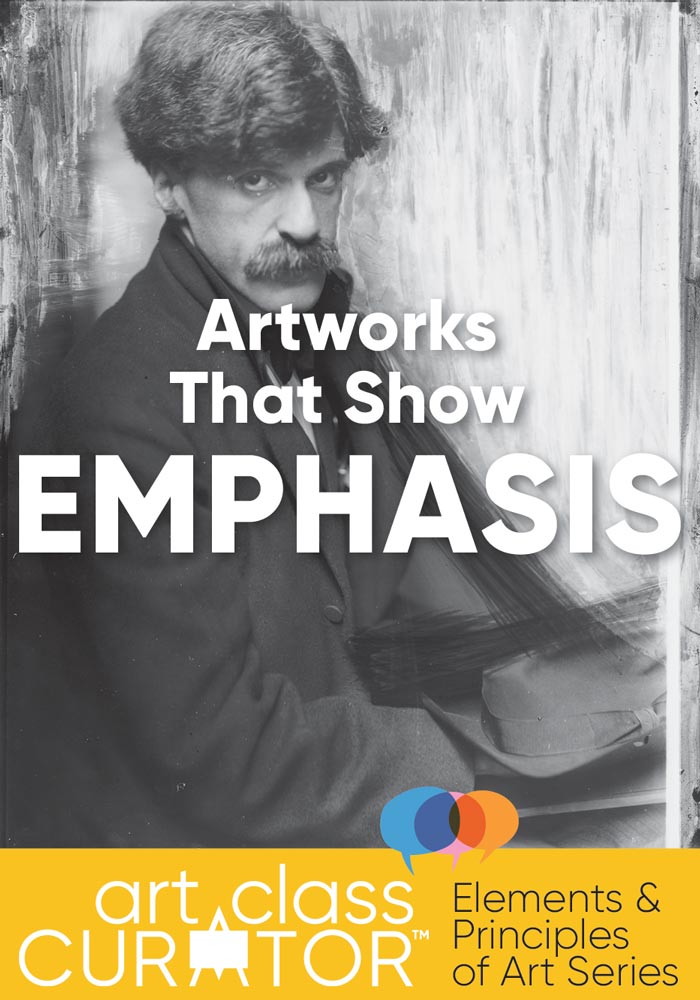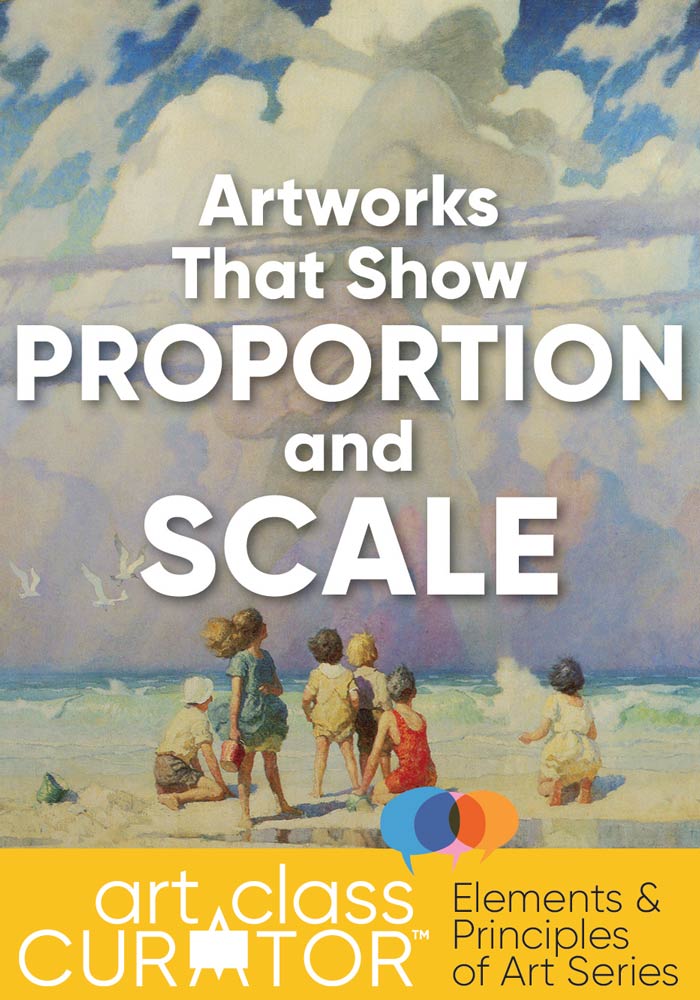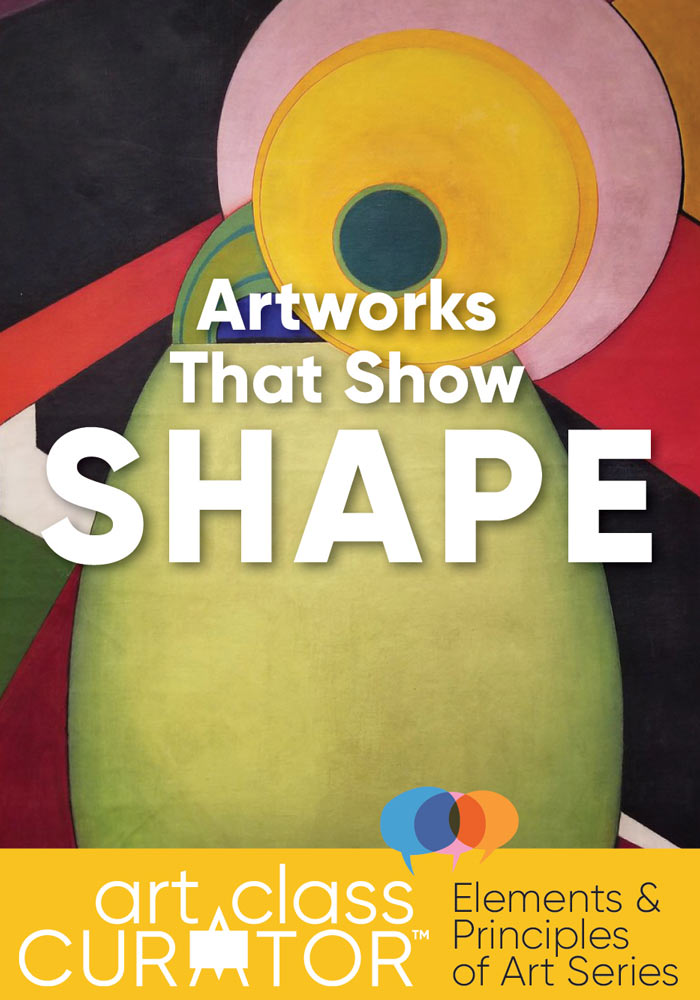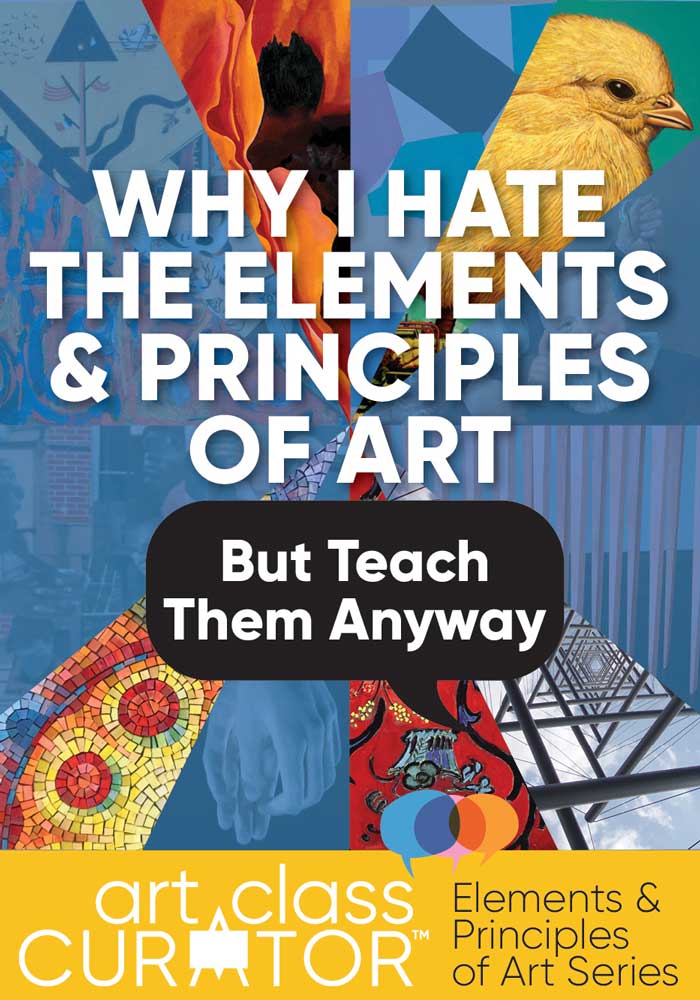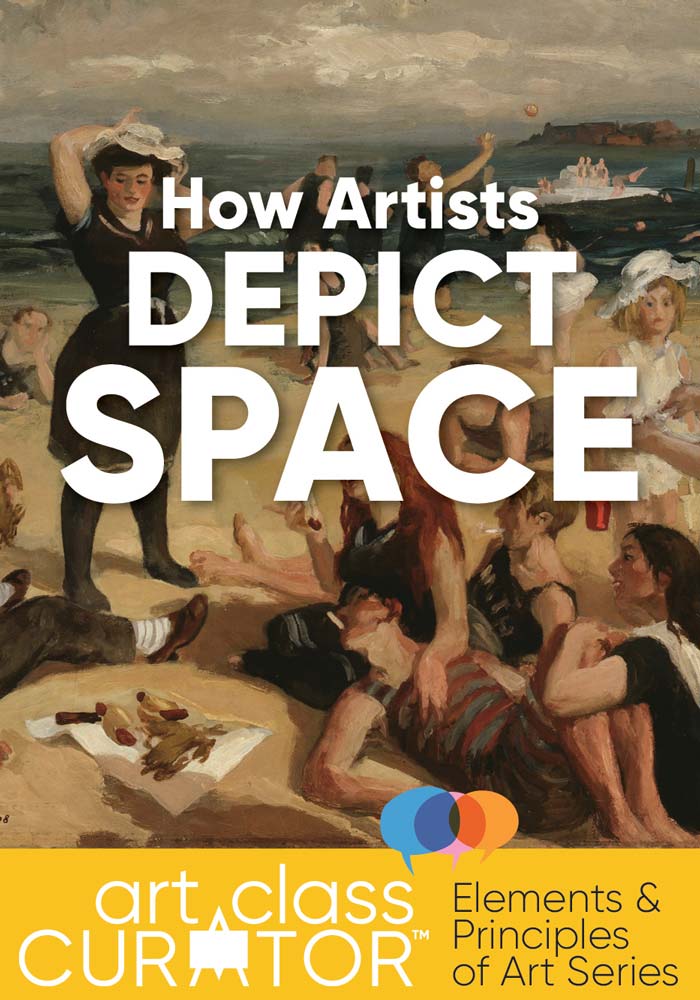Inside: Use this abstract art lesson to teach abstract art to your middle school and high school students. Students draw a bull four ways and look at art by the Bull Series’ by Pablo Picasso and Roy Lichtenstein to learn the process from realistic to abstract art.
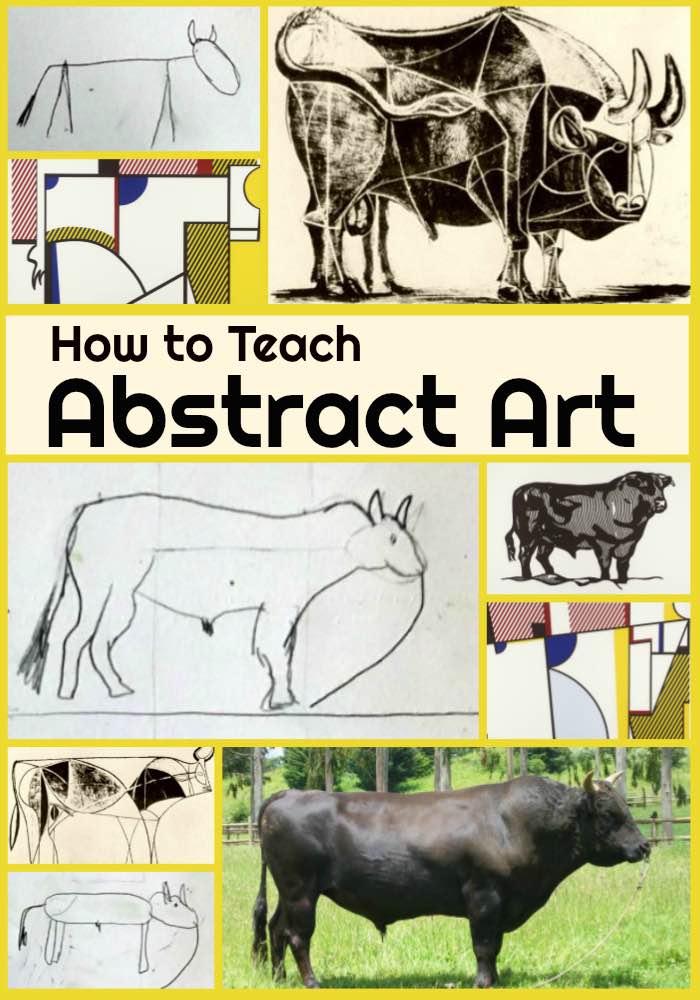
My kids could do that! How many times have you heard that phrase uttered about some truly complex abstract art?
How do you get across to your students the true nature of what abstract art is and where it starts in a way that makes sense to them? Use this abstract art lesson to teach this difficult concept.
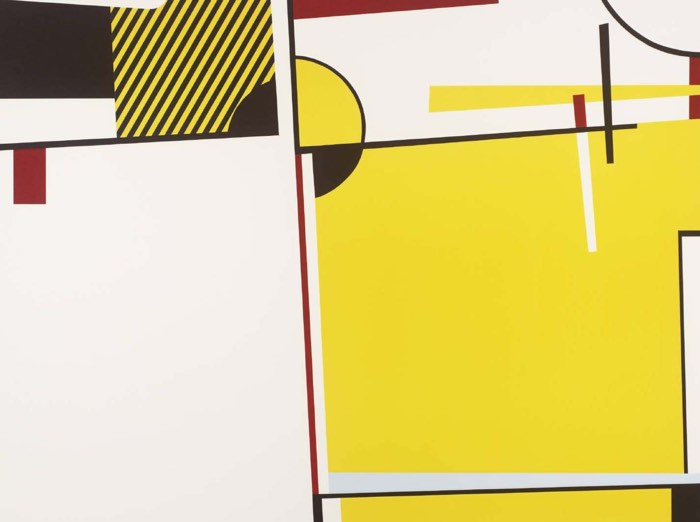
Take a look at this artwork by Roy Lichtenstein. It is non-objective art, which means it doesn’t show an image that most people would recognize. The composition is made up of lines, shapes, and colors arranged into a pleasing composition. Then it gets a little confusing because non-objective art is abstract, but not all abstract art is non-objective.
What would you think if you found out that this print was originally representing a bull?
Do you see it? No, not really.
Now take a look at all of them together. You can see that in each print Lichtenstein simplified the image before it until the bull was no longer recognizable.
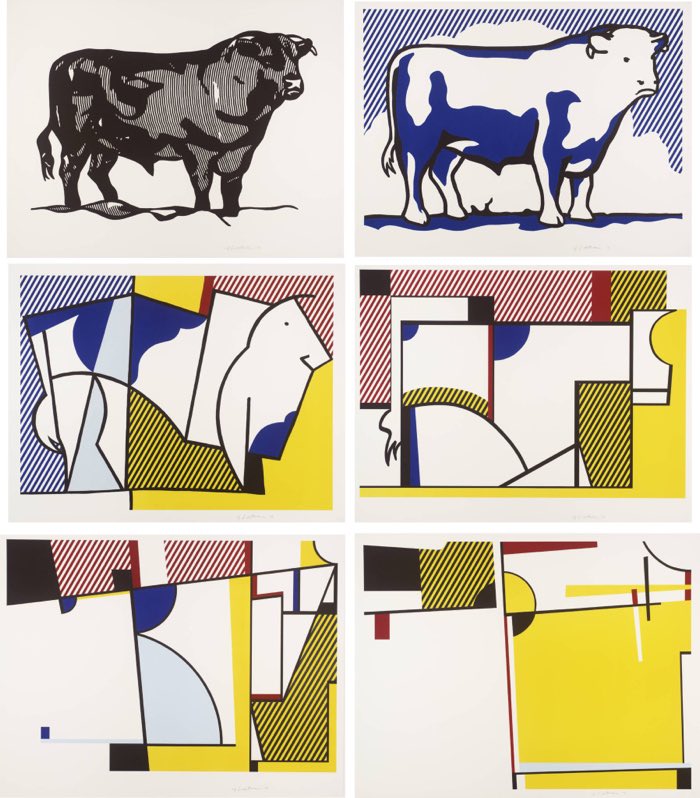
Artlex.com (may it rest in peace ?) defined abstract art as “Imagery which departs from representational accuracy to a variable range of possible degrees, for some reason other than [appearing to be true or real].” Abstract art can have identifiable things in it and still be abstract.
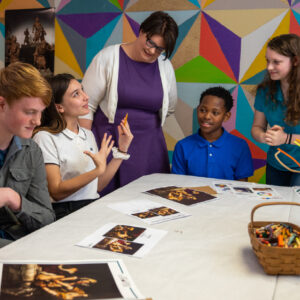
Get the Full Lesson!
This Lesson is in The Curated Connections Library!
Find the full lesson from this post along with hundreds of other art teaching resources and trainings in the Curated Connections Library. Click here for more information about how to join or enter your email below for a free SPARKworks lesson from the membership!
Abstract Art Lesson
To help illustrate the concept to students, I take inspiration from Lichtenstein’s Bull Series as well as Picasso’s (see the bottom of post). Before ever showing the art to the students, I have them do the following activity.
First, the students draw three or four big rectangles to fill a 9×12 piece of paper (or in their sketchbooks). For my 7th and 8th graders, I have them draw four, and the 6th graders draw only three.
In the top rectangle, I ask the students to draw a realistic bull as best as they can. I show them some of the contour lines in the bull, point out how to put some shading in there, and encourage them to draw as many details as they can.
Then, in the bottom rectangle, the students draw a stick figure of a bull–as simple as they can get it.
In the middle rectangle(s), I then instruct the students to think of their paper as a journey to the simplified bull. How do you get from a realistic bull to a simple one? Fill in the center rectangles with the steps between. Usually in the second from the bottom box, the bull is basic shapes, and in the second rectangle, it has the correct bull shape but with fewer details.
Pablo Picasso’s Bull Plates for Teaching Abstract Art
After the activity, I then describe to students that we were doing the process of abstraction, define the word, and then show Picasso’s Bull Series in secession from the most realistic bull to the least realistic bull.
[slideshow_deploy id=’14154′]
Here is a link to the Picasso Bull series slideshow so you can view it full-screen in your classroom.
(Yes, they are going to giggle at these a little bit, but just shut it down with some “You are more mature than this” teacher guilt, and you will be fine.)
After looking at Picasso’s bulls, I show Lichtenstein’s series, starting with the most abstract first.
To supplement this abstract art lesson, you may consider having students read this article from Art is Fun. She describes abstract art in an understandable way that would help students make deeper connections with abstract art.
Have your students try out this abstract art lesson and ask them again if their 2-year-old sister could do this. My guess is no. ?

